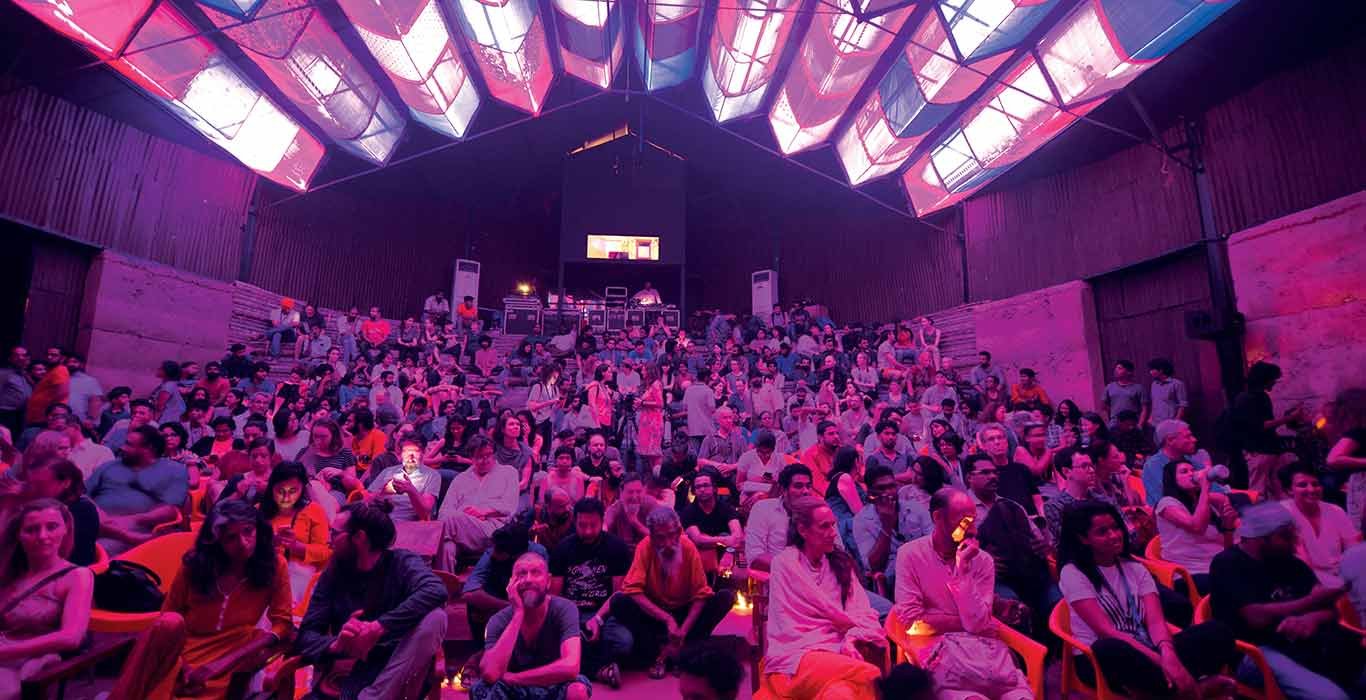Kochi Muziris Biennale:Shaping the Artistic Fabric of the City
Text: Raina Paul
Kochi is re-awakening its cosmopolitan spirit when its British-era buildings and galleries open its doors to welcome the fourth edition of international contemporary art festival, Kochi Muziris Biennale 2018, the largest of its kind in South Asia. The courtyards and interiors of various Dutchstyled buildings which manifest colonialism and control are now being replenished with multifaceted arwork; contemporary and freestyle among others, soothing both eye and mind. Hundreds of artists will, this time exhibit their creations to thousands of visitors who promenade along the seafront at Fort-Kochi, where majority of the artworks and illustrations will be showcased with pomp and fervour.
Artists predominantly from Latin America, Africa, and South Asia among others will exhibit their artwork for a span of three months starting from December 12, this year. It will be one of the best times to visit Kochi, as the city presents its best, with numerous art galleries, hotels and restaurants flaunting their facilities and delicacies, tempting the visitors.
Kochi Muziris Biennale is not just about its pride, emanating from art forms with perfect borders by popular artists, but that which transforms the city walls into a multi-coloured blanket of freestyle art, making it a platform of expression for aspiring artists.
Woman Curator
The Biennale, for the first time will have a woman curator - Anita Dube, who is an art historian and critic by training, and a visual artist by practice. She was quoted as saying that the Biennale this year will promote the concept of inclusiveness. During her travels across the globe, she is said to have met artists who foster the concept of non-alienation. Therefore she asserts that there is a need to listen to the marginalised, including women, queer community among others. As a result, the latest edition of this art festival will host women artists, who account for more than half the number of artists enrolled for Biennale. The festival also calls for representations from LGBT (Lesbian, Gay, Bisexual, and Transgender) community artists from the third world countries among others.
Visitors will also have an opportunity to present their own artwork, in forms of their choice during Biennale this year. For this purpose, Biennale ‘pavilions’ are being set up to have discussions, debates, interactions, and performances. The public can organise programmes as well as showcase their talents.
“The idea is part of the curatorial vision. Everybody who comes to witness biennale is a curator,” said Manoj Nair who is the editorial director of Kochi
Muziris Biennale, 2018.
Kochi Muziris Biennale also plans to recycle the pavilion conversation space and build 12 homes of 600 square feet area for those affected by the floods that devastated the state in August 2018.
The Biennale this year will have nine venues sprawling across parts of Kochi, with a majority of venues located in Fort-Kochi. The three month Biennale is expected to bring at least six lakh visitors to witness over 90 projects the city will be hosting.
It will also be an opportunity to expose graduate and postgraduate students from art colleges in India to an international platform. The visitors get to witness artwork by students not only from the country, but from other SAARC countries; Afghanistan, Bangladesh, Bhutan, Maldives, Nepal, Pakistan, Sri Lanka and Myanmar.
Apart from exhibitions, Biennale intends to educate children by fostering creative education in them. The project which is called by the name ABC (Art by Children) will see the programme reaching out to around 100 schools in 14 districts in Kerala engaging over 5000 children.
Art forms are also taken to hospitals as part of a healing process.
Kerala, this year will witness over 40 Indian and international artists contributing their work in a live auction that is scheduled to be held on January 18, 2019. Visitors to the state will witness artwork, contemporary and modern being sold under an umbrella.
Kochi - the ideal venue “Kochi represents the vision of how the world should be. We have about 44 communities in Kochi; Guajarati, Marathi, Anglo-Indians etc.”, said the editorial director of Biennale.
The all-encompassing nature of Kochi paves way, not just for multifaceted artwork but the coexistence of various communities in a single land. It is this aspect of the city that culminated in the hosting of Biennale every alternate year starting in December 2012.
One who travels to Kochi during Biennale carries bountiful wealth, not only because of what the city showcases, but because it turns out to be a meeting place of people from different backgrounds. It becomes a sharing ground in terms of experiences and perspectives.
The sight of the streets on a usual Biennale day is awe-inspiring. The streets are busy during days with thousands crowding the pavements while nights become equally alive with lit up alleys and boulevards. This time of the year offers an amalgamation of the local and foreign communities. The previous Biennales brought over a million visitors to Kochi, and by now Kochi resonates the term ‘Biennale.’
“Not many knew this small piece of land named Kochi until Biennale started being organised in the city,” said a person associated with Kochi Muziris Biennale, who requested anonymity.
Biennales of the Past Biennale is not anymore a new coinage for Kochi. Its consistent existence has also helped spin the artistic fabric of the city. The city has become accommodative over the years not only because of the influx of visitors but also due to the variedly faceted expressive art that has an educative nature to anyone who witnesses them.
One exhibition during the previous year showcased the concept of death, decomposition and beauty through the photographs taken by the artist. Although, a strange concept to many, it proved its point. Yet, another artist filled an exhibition hall with old frames and documents that were walled with little whitespace between the photo frames.
There were artworks that involved music, cinema, documentary that sprawled across venues in Fort Kochi. While the venues were 12 in the previous Biennale, this year, it has reduced to 9, probably due the fact that Biennale this year limits artists mostly from the marginalised sections of the society. Like its curatorial vision, it envisages non-alienation at its fullest.



